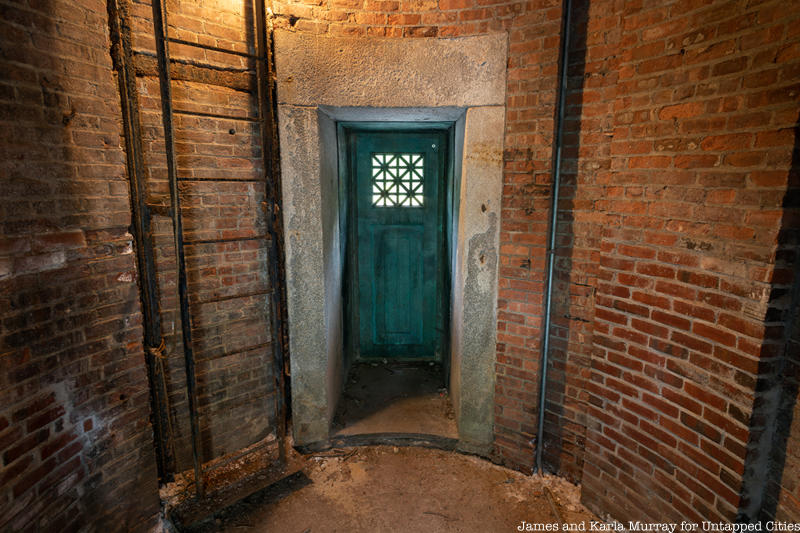2. The Prison Ship Martyrs’ Monument crypt houses the remains of those who died on British prison ships

The Prison Ship Martyrs’ Monument in Fort Greene Park is one of the defining features of the neighborhood, commemorating the more than 11,500 American prisoners of war who died in captivity while on British prison ships during the Revolutionary War. Prisoners were kept aboard the HMS Jersey, Falmouth, Hope, and other ships, some of which were maintained in New York Harbor. More Americans died in British jails and prison ships in the Harbor than in all Revolutionary War battles. Unfortunately, many bodies were thrown overboard, and many were left neglected in Wallabout Bay. During the construction of the Brooklyn Navy Yard, many of these remains were uncovered and put into boxes and casks, and a small number of remains were interred in a crypt beneath the base of the monument.
An original vault was constructed starting in 1808, though little was done to repair or maintain it. In 1873, $6,500 was put forward for a new brick mausoleum, which was later replaced by a larger monument. Olmsted and Vaux were originally tasked with designing the monument, but the final design was put forward by Stanford White. The monument stands at 149 feet high and consists of a granite Doric column. A bronze brazier by Adolph Weinman sits atop the column.
William Howard Taft delivered an address when the monument was dedicated in 1908. Just six years later, though, one of the four bronze eagles was stolen and sold as scrap metal, and in 1923, vandals battered the bronze door to the crypt. In 2004, a $3.5 million budget was put forward for the renovation of the monument and crypt. King Juan Carlos II of Spain paid an official visit to Fort Greene Park during the Bicentennial Year of 1976.





